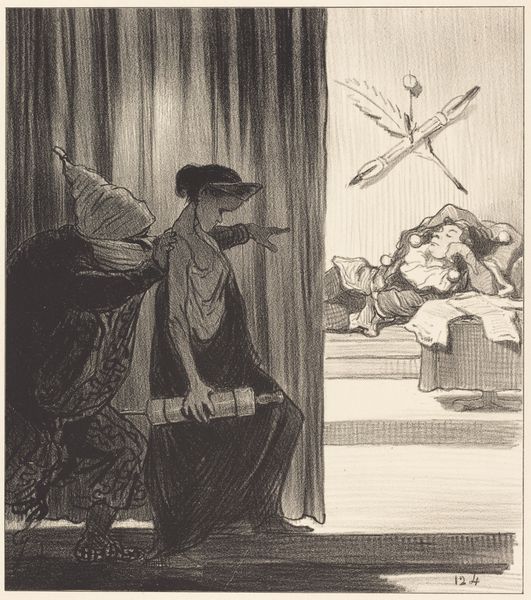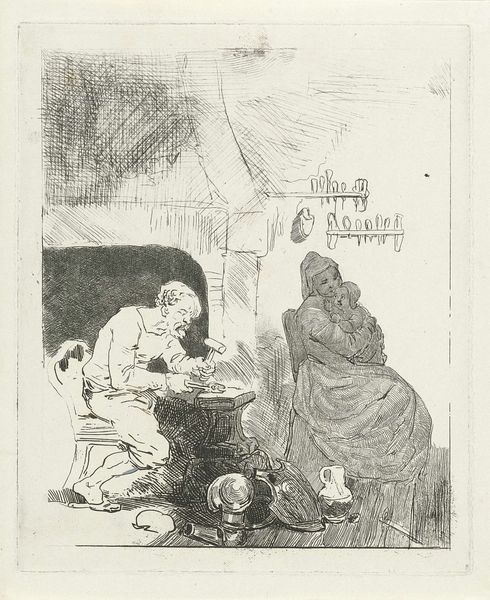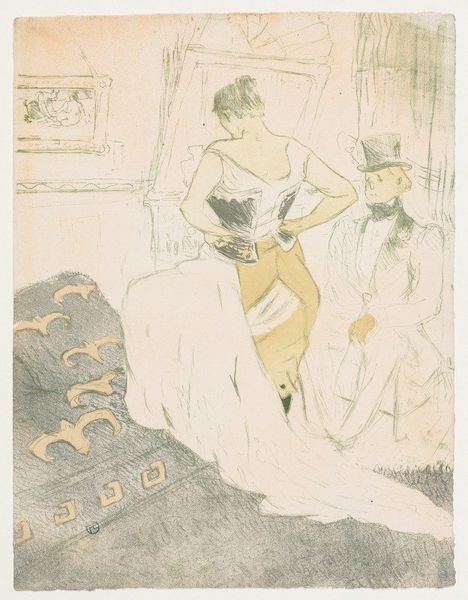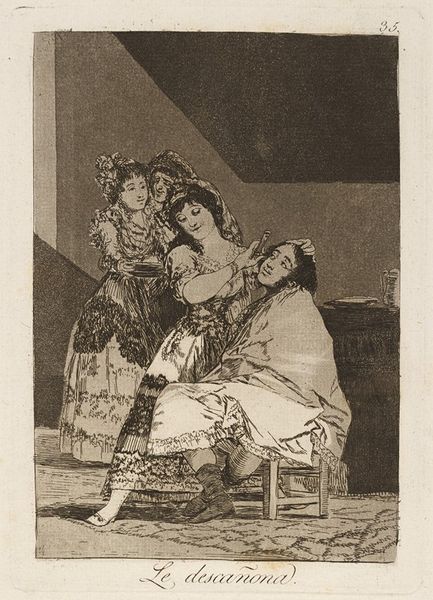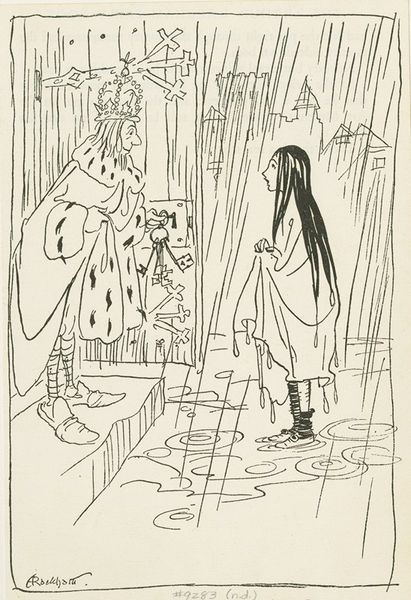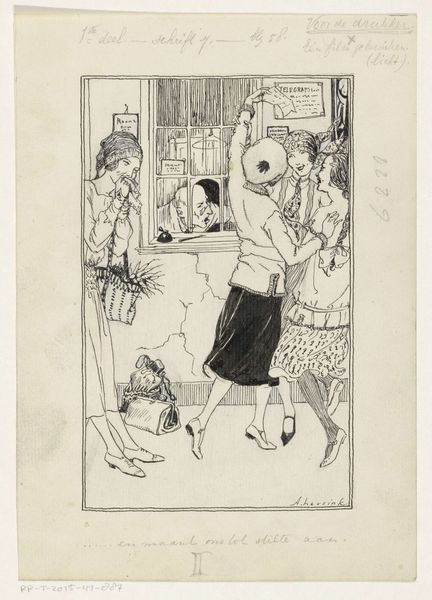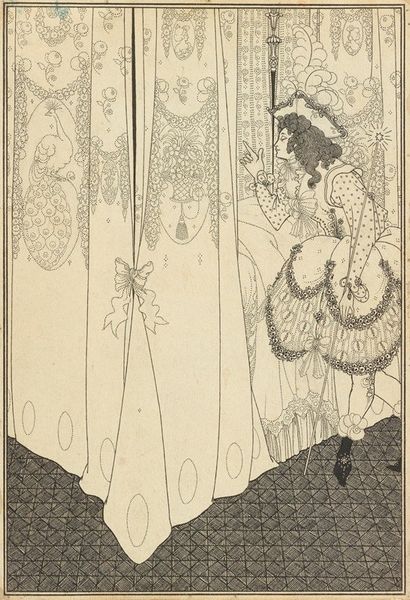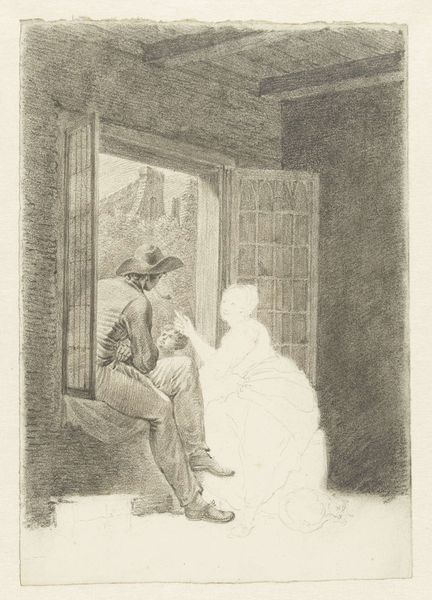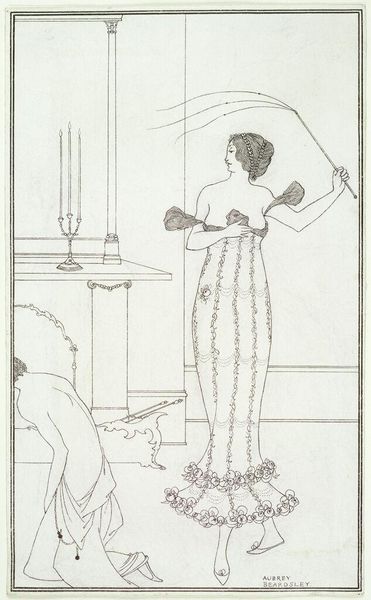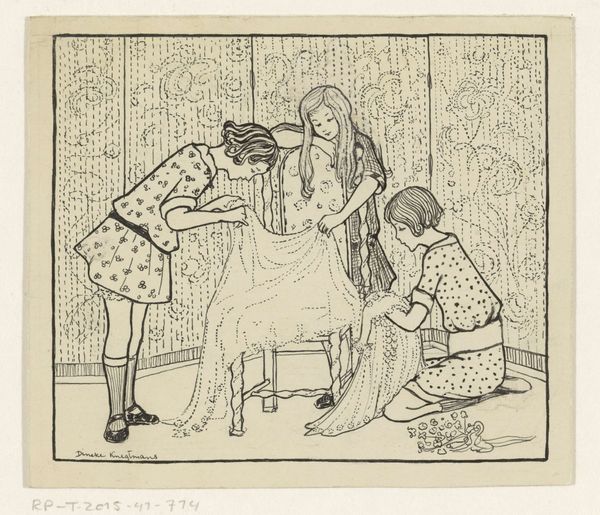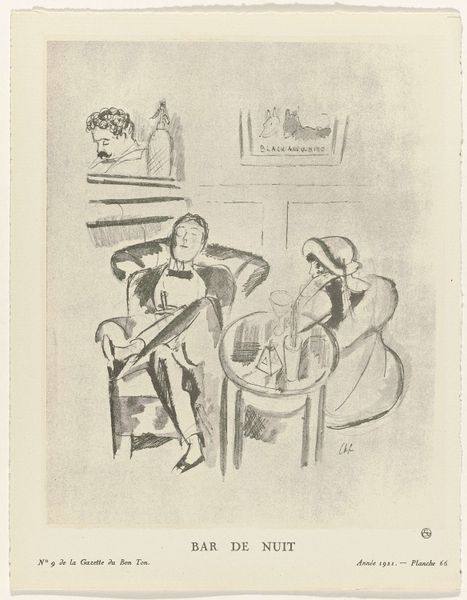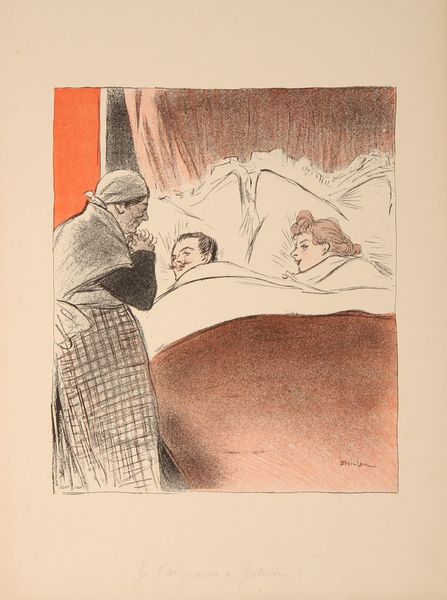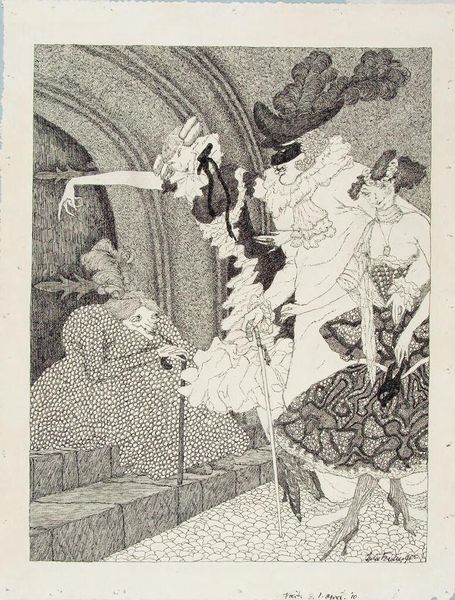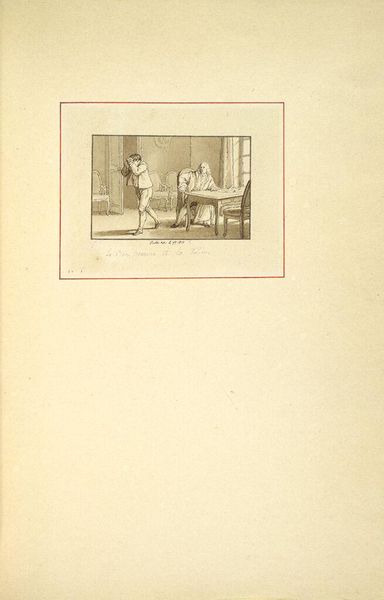
drawing, paper, ink
#
portrait
#
drawing
#
paper
#
ink
#
symbolism
#
genre-painting
#
northern-renaissance
Copyright: Public Domain: Artvee
Curator: L\u00e9on Spilliaert’s “Les Voeux de Nouvel An,” created in 1918, employs ink on paper in what seems like a scene of domestic celebration, almost stark in its rendering. What do you make of this, at first glance? Editor: There's something so fragile and wistful about it. The pale palette gives it an almost ghostly quality, like a memory fading at the edges. That steeple outside the window is a lonely sentinel watching over this intimate gathering. Curator: It's fascinating how Spilliaert blends genres; this could be a portrait, genre painting, and yet whispers of Northern Renaissance aesthetics are evident in the linear quality of the ink work. The material reality speaks of economy – post war scarcity might have informed the choice of ink and paper over paint. Editor: Precisely. I wonder if those apples scattered on the floor represent hope and prosperity for the coming year, a vibrant contrast to the monochrome scene, or maybe the ephemerality of such hope? Like shiny, tempting distractions that are gone all too quickly! Curator: Their placement feels very deliberate, grounding the ethereal quality with everyday life. Analyzing the composition, it's impossible not to notice how the window, the curtain, and even the steeple create a frame within the frame, emphasizing both confinement and outlook, very telling details indeed. Editor: Agreed, and that's Spilliaert for you, isn’t it? Pulling you in with a comforting domestic scene, only to unsettle you with an undertow of longing. I bet the paper itself holds a secret narrative, too. Where did he source it during that period? Was it reused, rationed, treasured? All of it must bleed into the artwork. Curator: Undoubtedly. It adds layers to how we should interpret his artistic labor. The scarcity, or provenance of his material could definitely highlight the sociopolitical backdrop influencing such artistry. Editor: Ultimately, I'm left with a sense of poignant tenderness and quiet celebration, underscored by the shadow of larger, unspoken anxieties. Even with simple materials and technique, it whispers secrets about life and yearnings in a world ravaged by war. It truly echoes a sentiment that even the simplest, quiet moments of hope matter, despite the grimness of the wider social-political world. Curator: A reflective sentiment fitting for the turning of the year, then. A compelling reminder to look closer, considering material conditions even in the most seemingly gentle scenes.
Comments
No comments
Be the first to comment and join the conversation on the ultimate creative platform.
